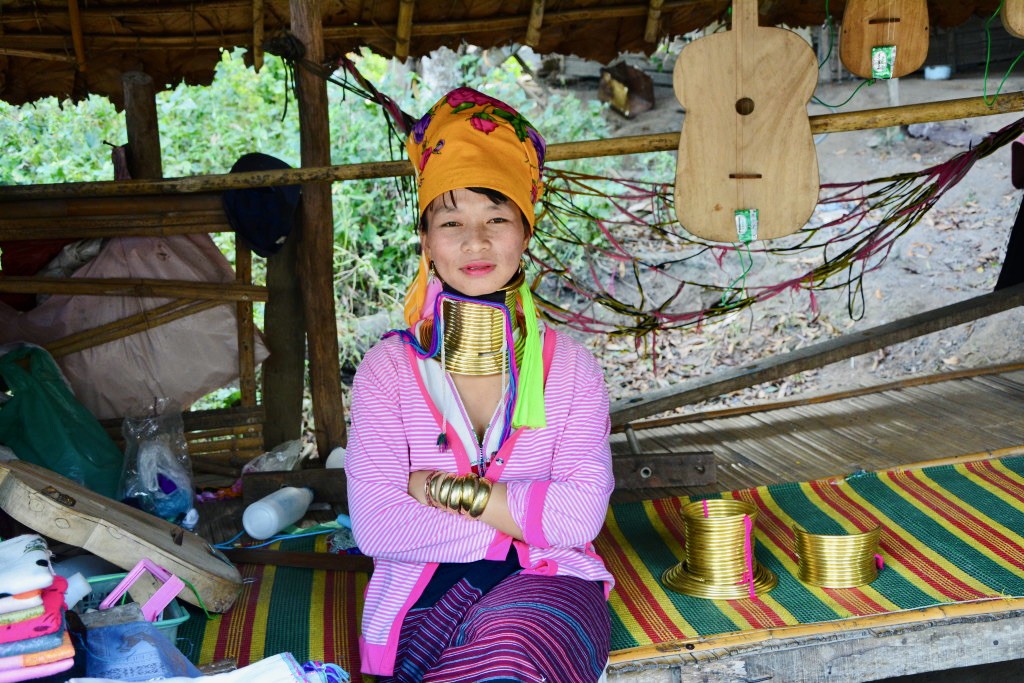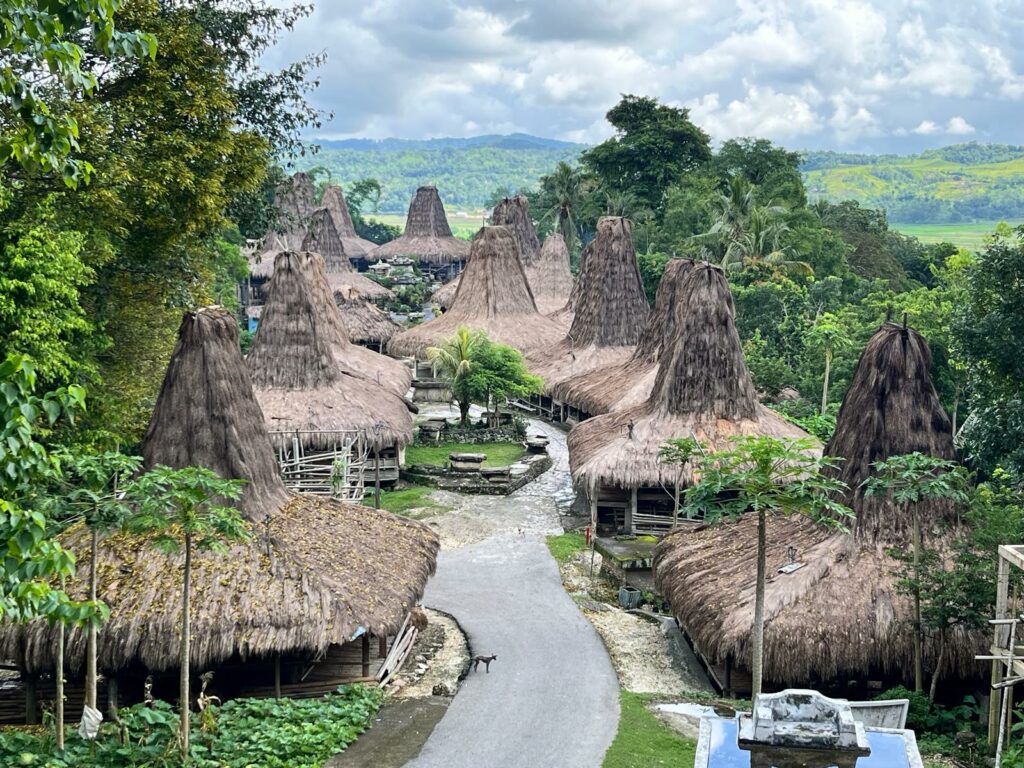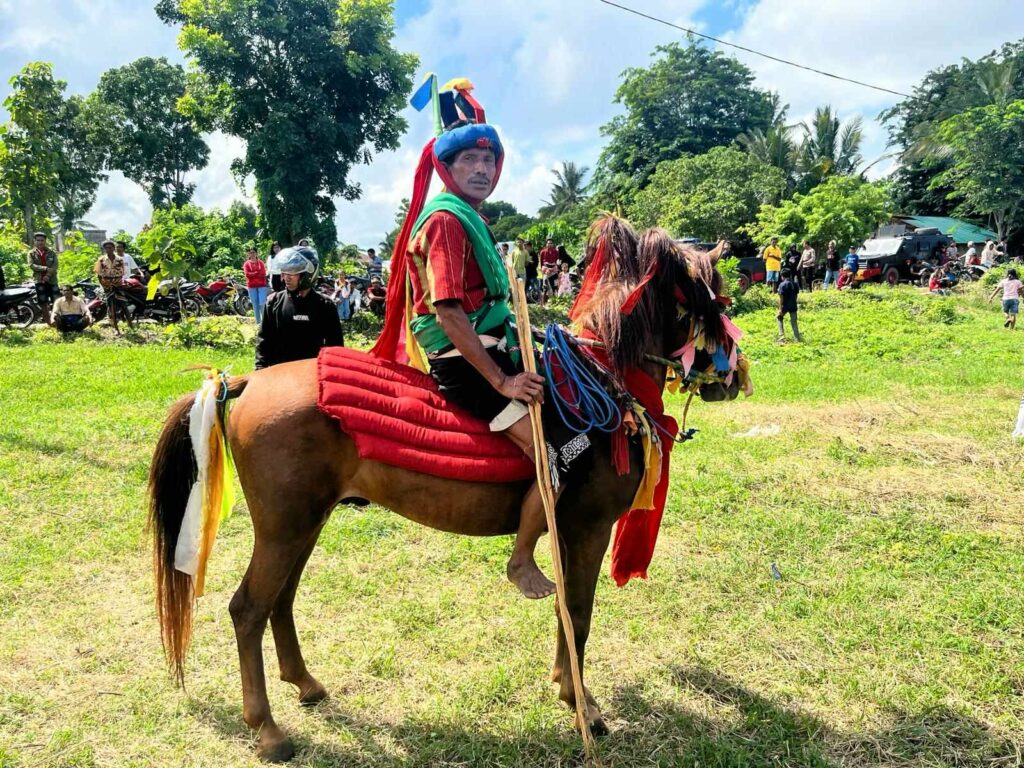It was long walking from Chiang Mai toward northern direction to see Thailand tribes. Me and my new friend Mia (Dinh) were so tired after fascinating bangkok and seeking wilderness that we decided to walk though the jungle alone. After all it wasn’t that dangerous after finding a small path along the bushes.
On the way to one of the Thailand hill tribes!
Mosquitoes were terrible, you really need to apply a lot of deet. After passing banana plantations, we entered a really dense jungle, passing along few small local bungalows, the locals were giving us a strange look… few minutes later we saw something, I was never prepared for .. chained elephants!!! Something what always brakes my heart – chained, imprisoned animals. Not even mentioning terrible animal abuse in countries where tropical animals are still tourist attraction. Finally we reached the famous tribe village, which is number one attraction in many travel guides. The entry fee is 500 Baht! Wow, that was surprisingly expensive! That immediately gave us a thought that something’s wrong with this place and it’s probably set for a fake tourist attraction.
The highland minorities of Thailand.
The legal perspective of ethnic minorities is far different from what you can imagine. The highland minorities of Thailand live in the mountainous areas of western and northern Thailand. There is about 20 different hill tribes with 1 million people. Travelers desire to visit the tribe villages, to see the antient culture, lifestyle and habits. But they have no idea that those people are mostly enslaved for profit. They are stuck in a human zoo with no rights and citizenship granted. This also means they cannot own a land. They suffer from evictions and relocation. It happens even on a land they have cultivated for decades.
Sad truth about Thailand tribes.
Setting up fake villages happens not only in Thailand but all nearest countries. The villages are just a tourist attraction rather than a reserve helping to preserve their way of life. There are mostly refugee camps, where people are stateless and without rights granted. They are also under strict control, forced to look faultless and perform a role in fake life spectacles. The village was perfectly prepared for tourists. Stands and small businesses full of handmade and handwoven products always accompanied with a lady from one of the tribes. She was ready for a photo, hunting for a portrait, giving you the brass neck to try on or showing the weaving way. All of that is just to bring travelers attention for as long as possible.
There are several reasons why villagers from ethnic minorities do not apply for citizenship. Even though it is their right! First of all the people are not much educated and are not aware of their rights. Also they do not speak Thai and often have no money to reach the district offices. Lastly, during the journey they continuously face corruption and discrimination problems.
“Hilltribe”
Hilltribe is a name to several highland ethnic minorities: Karen, Hmong, Yao, Akha, Lahu, Lua, Lisu, Khamu and H’tin.
The Akha people are of Tibetan origin and live in the mountains of southern China, Laos, Myanmar (Burma) and northern Thailand. They mostly live in northern provinces of Chiang Rai and Chiang Mai. Every Akha village is distinguished by their carved wooden gates, presided over by guardian spirits. The Akha are identified with the opium growers but the the opium growing together with the ingrained farming techniques are integral part of Akha culture. Akha are traditional opium users but they also enjoy a rich heritage including at least thirteen festivals in a given year.
The Thailand tribes have suffered resettlement and has been widely exposed to the narcotics trade and civil war on the Thai-Burmese border. Shan and Karen separatists have battled the Burmese central government for more than 50 years. Although Akha are apolitical for the most time, the State Peace and Development Council (SPDC), which supposed to support the situation, has been accused of deliberately killing, torturing and arbitrarily detaining members of ethnic minorities. The Akha people are mainly confronted with relocation of villages by Thai authorities, prostitution, narcotics, poverty, loss of culture and identity, and depredations by Christian missionaries. The problem reaches the economic and political scale. Myanmar is facing the civil war, deforestation and road building and luck of political status frustrate the situation.
Kayan minority.
Kayan minority comes from Myanmar. The most common mistake is calling them one of the hill tribes. They are refugees, so you shouldn’t call them hill tribes. They are victims of civil war between Burma and Thailand, the world’s longest running civil war. It’s an ethnic group with very distinct cultural practices, sense of beauty and highly photogenic. The most famous is the subgroup that wears the brass neck coils called Long Neck. They are very well known for extremely long necks, which is a symbol of beauty. Nobody mentions that those women are suffering from inhuman back pain. They are forced to carry too much brasses which causes bones degeneration and often the neck is not able to bear the head. They live in constant pain but never speak about it.
We tried to talk to them asking about their way of living. After visiting all those places I can honestly say there is no respect for human dignity at all. Women did not want to speak with us. They are told not to speak with the tourists. She just revealed that the only thing they get from the village owner are seeds for growing the food. No money, no health care, no education, no support for any need.





